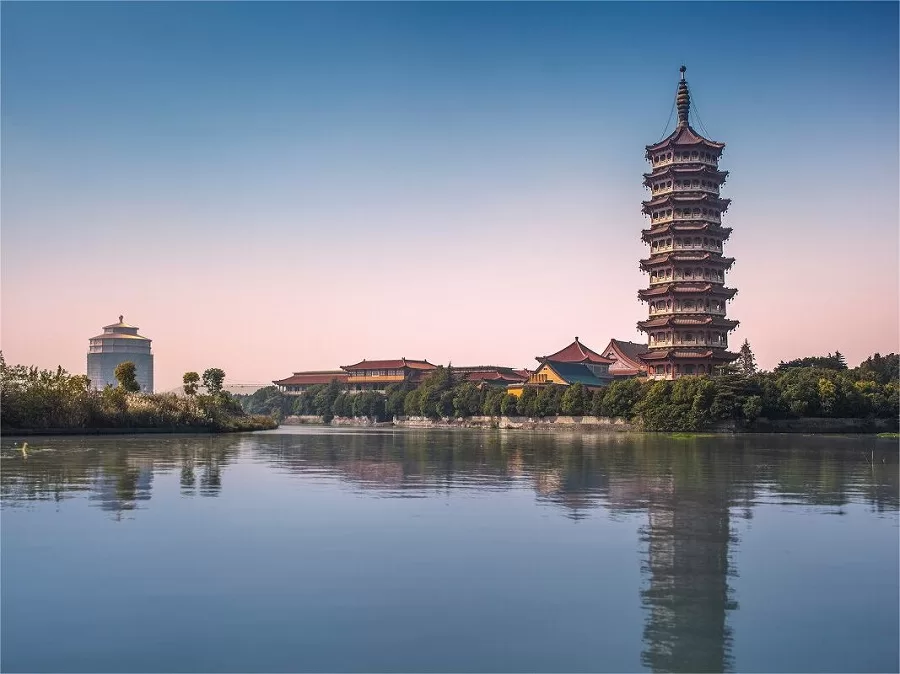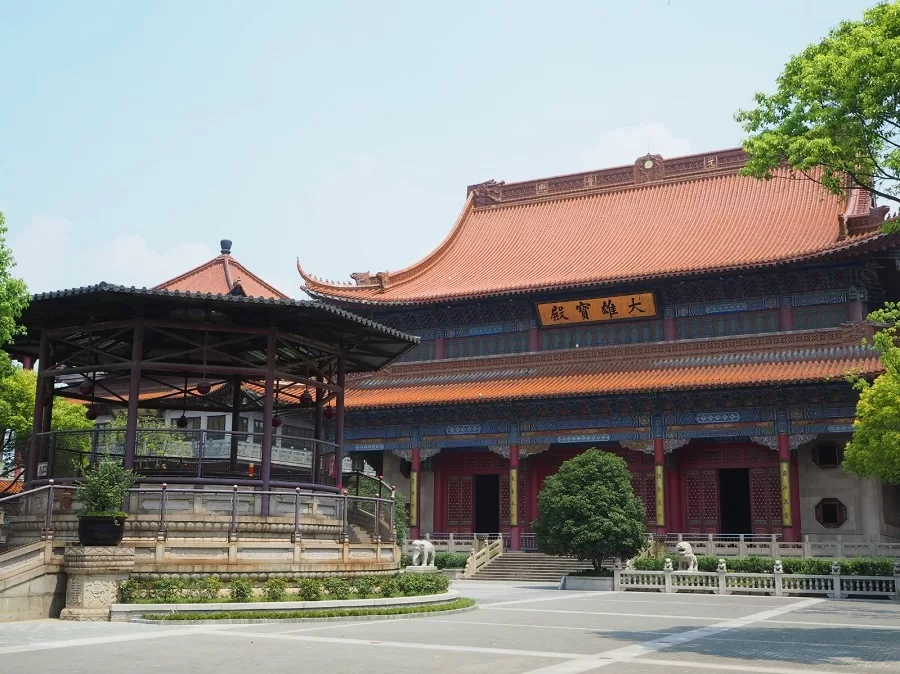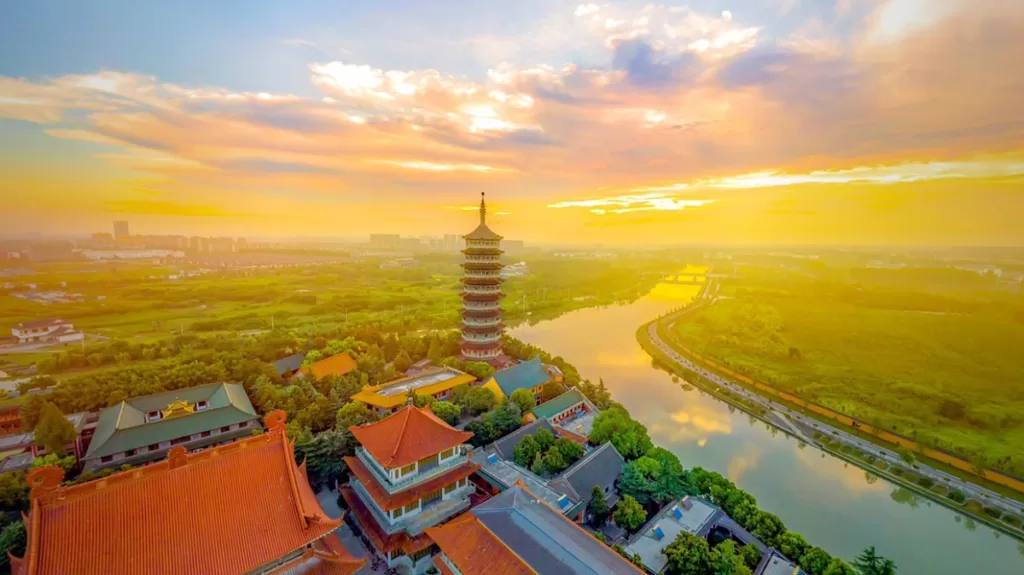Gaomin Temple (高旻寺), located in Yangzhou, China, has a rich history dating back to the Sui Dynasty. Throughout the centuries, it experienced periods of expansion, abandonment, and even changes in its name. However, it was rebuilt during the early Qing Dynasty and stands as one of the eight renowned Buddhist temples in Yangzhou. Gaomin Temple is also one of the four major Zen Buddhist monasteries in China, along with Jinshan Temple in Zhenjiang, Tianning Temple in Changzhou, and Tiantong Temple in Ningbo.
The temple has a significant historical and cultural value as it served as a retreat for emperors during the Qing Dynasty. Both the Kangxi and Qianlong emperors visited Yangzhou and utilized Gaomin Temple as a temporary imperial residence.
Table of Contents
- Basic Information
- Location and Transportation
- Highlights of Gaomin Temple
- Vlog about Gaomin Temple
- Useful Tips Summarized from Reviews
Basic Information
| Estimated Length of Tour | 2 hours |
| Ticket Price | Free |
| Opening Hours | 8.00 – 18.30 |
| Telephone Number | 0086-0514-87511398 |
Location and Transportation
Gaomin Temple is situated in the southern suburbs of Yangzhou. Its precise address is 5 Yangzijiang South Road, Guazhou Town, Hanjiang District, Yangzhou, Jiangsu Province.
Visitors can take Tourist Line 2 and get off Gaominsi Stop (高旻寺站) or take bus 37, get off at Hanjiang South Raod Gaominsi Road Stop (邗江南路高旻寺路), and walk about 700 meters to the east to reach the temple.
Highlights of Gaomin Temple
Tianzhong Pagoda

One of the most iconic features of Gaomin Temple is the “Tianzhong Pagoda.” In 1651, Wu Weihua initiated the construction of a seven-story pagoda on the banks of the Sancha River, and it was completed in the autumn four years later. This pagoda was an awe-inspiring structure that reaches into the heavens, and its name, “Tianzhong Pagoda (Amid Heaven Pagoda),” reflects its lofty presence . In 1703, Emperor Kangxi visited the temple during his fourth Southern Tour and ascended the Tianzhong Pagoda. From the summit, he enjoyed panoramic views that seemed to extend into the sky. Impressed by the experience, he bestowed the name “Gaomin Temple” to the site (Gao means high, while Min means the sky in autumn).
Unfortunately, the pagoda was destroyed during a conflict in 1844, but it was reconstructed in the early 20th century. Today, the Tianzhong Pagoda stands at 88 meters, with nine tiers and an octagonal shape. The exterior of the pagoda is adorned with inscriptions of the entire Lotus Sutra, and the interior houses 72 jade Buddha statues.
Elegant Architectural Design

The architectural design of Gaomin Temple is characterized by its elegance and harmony. The temple complex is situated near water, with serene canals and placid lakes surrounding it. The buildings are arranged to follow the natural terrain, creating a winding and tranquil space. This arrangement reflects a blend of Buddhist architectural forms with the aesthetics of local residences and gardens, making it a unique and picturesque place.
Majestic Main Hall

The main hall of Gaomin Temple is a striking example of the temple’s refined design. With a height of 30 meters and a floor area of 1,320 square meters, the hall was constructed following the architectural principles of imperial palaces. The foundation of the hall is made of granite and exudes a sense of solidity and grandeur. The hall is adorned with intricate carvings, painted beams, and colorful decorations. Inside the hall, the Buddha statues are exquisitely crafted and their arrangement is distinct. Notably, there is a statue of Gautama Buddha holding a lotus flower, depicting a moment from Buddhist scripture when he held up a flower and his disciple Mahakasyapa smiled, understanding the unspoken message.
Vlog about Gaomin Temple
Useful Tips Summarized from Reviews
Serene and Sacred Atmosphere: Gaomin Temple tends to have very few tourists, often less than ten at a time. Travelers appreciate the tranquility and solemnity, making it a worthwhile destination for those seeking a peaceful experience.
Feline Companions: Inside the temple, you’ll find many friendly cats with charming personalities. Their presence adds a unique and delightful aspect to the temple experience.
Caution at the Entrance Stalls: Various small stalls can be found near the entrance. It’s advisable to avoid purchasing incense from these stalls, as the incense sold outside is not allowed inside the temple.

